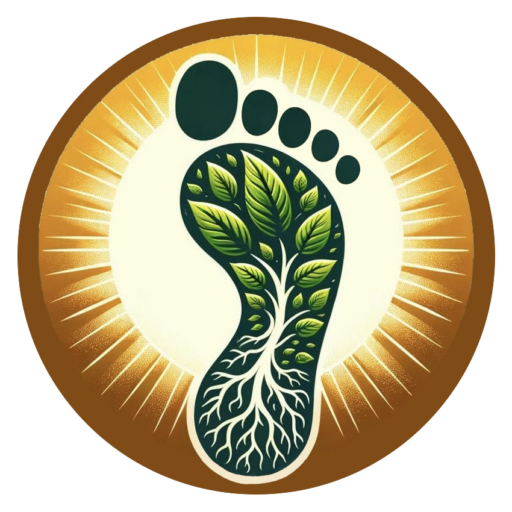Please note: this video is currently in French, but you can activate YouTube’s auto-generated subtitles in English while we work on providing a dedicated English version.
In this article, we will try to better understand the advantages and disadvantages of hygienic fasting and active fasting.
Hygienic fasting is a fast that is practiced in the greatest physical and mental rest. One remains mostly in bed during the day, with no physical activity other than a short daily walk, and without intellectual activity or distractions. Screens are therefore banned, and one finds oneself alone with oneself.
Active fasting, on the contrary, is often done in groups with all sorts of gentle physical activities like walking and yoga. Activities to which one can add massages, games, treatments, cold showers, etc.
The benefits of fasting
Fasting is a universal healing method recognized for millennia but fallen into oblivion, just like its benefits: lymphatic cleansing, toxin elimination, cellular renewal, and autolysis (destruction of old, dysfunctional, or damaged cells). On an emotional level, what is repressed comes partially to the surface like the toxins in the body. On a mental level, mental conditioning has less hold, allowing for better access to the Self. And on a spiritual level, intuitions are stronger and clearer, which helps to become aware of a need, to take certain directions for the future, or to make important choices. To learn more: read this article on the benefits of fasting.
The difficulties of fasting
Fasting is the most effective and inexpensive healing method there is, a true gift from nature. So with so many benefits, it should be popular. This is not counting the difficulties it causes.
To understand them, let us keep in mind that our modern living conditions are very far from the ideal living conditions in which we could thrive and access physical and psychological well-being. Currently, our bodies are clogged and weakened by poor nutrition (which since our birth should ideally consist mainly of raw fruits and vegetables). And our minds are polluted by conditioning, fears, negative thoughts, life scenarios, and limiting beliefs that have been propagated by our family (often unknowingly, believing they are doing well), school, and society. So, for most, we find ourselves in adulthood not knowing how to nourish ourselves and not knowing how to direct our lives and manage our emotions. Emotions most often repressed in a survival and conformity reflex towards the family and social sphere.
Thus, during a fast, the natural comes back with a vengeance and the body will try to detoxify on all levels. On a physical level, it will bring out, layer by layer, the poisons stored in the fluids (blood and lymph, 45 liters combined) and the cells. In parallel, on an emotional level, traumas and wounds will try to rise to the surface of consciousness waiting to be fully experienced and then, ultimately, integrated as constructive experiences. Finally, on a mental level, negative thoughts, fears, and limiting beliefs will weigh down morale because they are true poisons and, more than ever, they will be felt as such. We then become more aware of the importance of having positive thoughts, breathing consciously, and meditating to reprogram ourselves (read the article “Breathe and Meditate”).
Ultimately, due to our past being completely out of sync with our physiological needs (read the article “Definitions of Hygienism?”), we all come from very far away, which is why fasting can become an unpleasant experience and quickly discourage the uninitiated.


Fasting in nature
In nature, animals fast in two ways:
- If they are sick, they remain still and rest until healed. This corresponds to hygienic fasting.
- If they have no food left, they move to a better place. This corresponds to active fasting.
The current context
In addition to the difficulties already mentioned above, two obstacles will hinder the body in the eliminations it will attempt to make:
- The digestion of dairy products and cooked starches has accumulated in the body residues that naturopaths call “glues” or “colloidal waste” (read this article to be convinced). This is not a metaphor; casein from milk and starch are truly used in the industry to make glues. These digestion residues from cooked foods will hinder, sometimes greatly, the body in its eliminations, which can make fasting partially ineffective and particularly unpleasant. That is why some naturopaths recommend performing an enema and purging before fasting, then engaging in gentle physical activity during it, receiving massages, and practicing breathwork.
- There are blockages in the body at the physical, emotional, and energetic levels that will also hinder the body in its eliminations. For example, holding grudges, clinging to beliefs, principles, not wanting to change, preferring to stick to habits rather than renewing oneself can be the source of constipation.
Hygienic Fasting VS Active Fasting
It is common to hear that active fasting is not very useful and that only hygienic fasting truly allows the body to cleanse and regenerate. The argument put forward is that the body needs all its vital energy during fasting, and if it is dispersed in physical activity, then eliminations will be diminished, and thus, fasting is less effective.
To stop at these considerations is to forget a bit too quickly the current context, namely that our body contains glues and that many blockages on different interdependent levels greatly slow down eliminations. It is important not to lose sight of the fact that if one feels unwell during a fast, it is because eliminations are difficult or blocked.
We then have two ways of looking at things. Either we consider that the unpleasantness of the experience is a guarantee of effectiveness. There is often in us a Judeo-Christian tendency that enjoys associating suffering and effectiveness…Or we seek a way to relieve these eliminations through naturopathic detox techniques and/or active fasting.
Hygienic fasting in practice
- If you suffer from an illness (which is not a contraindication to fasting) or a lack of vitality, the body needs to rest and regenerate. Hygienic fasting is just right. And with naturopathic detox techniques (enema and purges), it can, in some cases, be more beneficial, but it is not “hygienic” in the purist sense of the term…
- If you have great vitality or if, beforehand, you have provided your body with enough detox, then hygienic fasting is an experience to be lived and will probably yield results.
- If you do not suffer from an illness but your body is clogged (which is the case for 99.999% of the population), then hygienic fasting could be an unpleasant and discouraging experience due to all the arguments stated previously.


The interest of physical activity during a fast:
Physical activity promotes:
- Better circulation of blood, energies, and lymph (whose role is to evacuate toxins).
- The massage of muscles and organs caused by body movements. This also leads to a release of tensions.
- Greater oxygenation of the body, which has a beneficial alkalizing action and increases vital energy.
- The degradation by oxidation of toxic substances to produce energy.
- A higher caloric consumption, which implies more fats and cells (autolysis) burned. One can therefore legitimately wonder if being active during a fast does not allow for accelerated cleansing and even optimize energy levels. In the context of a dietary transition (read the article “The Transition to Living Food”) to raw, athletes seem to benefit from this acceleration of cleansing.
In addition, during a Fasting & Trekking:
- Optional purges
- More time spent in nature, a true alkalizing and energizing balm that softens detox.
- Hormesis through cold baths, which is a positive stress promoting detox by mobilizing the fascia* and decongesting the organs, in addition to increasing vital energy.
*Fascia are a membrane of connective tissue just like tendons and ligaments. This fine fibrous membrane is translucent, malleable, and envelops all bodily structures: muscles, bones, arteries, organs. They serve as a matrix, a support for the human body. They are found everywhere in the body, ensuring a certain continuity between different systems. Fascia are innervated and vascularized, and also allow, thanks to tubular fibers, the passage of lymphatic fluid.
Active fasting in practice:
- It is easy to fast during active fasting.
- Cleansing crises frequently occur after fasting, a sign that cleansings have taken place.
- One feels a significant boost of energy and motivation post-fast that lasts for weeks.
- From one time to the next, it becomes easier and easier to fast, a sign that the body is becoming cleaner and more regenerated. Which, in essence, is the goal!
In conclusion
We cannot decide which of the two fasts (active or hygienic) is the most effective. For that, true scientific experiments would need to be conducted, which will undoubtedly happen one day. In the meantime, we can simply test both practices and form our own opinion in light of the clarifications we wished to provide on this subject.











